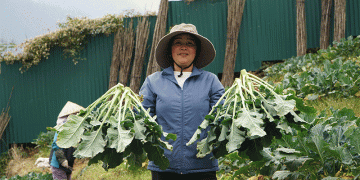#BlacklegFungus #PhomaLingam #AgriculturalCrops #FungalDiseases #CropManagement #PlantPathology #CropRotation #ResistantCrops #YieldLoss #EconomicLoss #PlantPathogen #FungusOutbreak
The agricultural industry is one of the most important sectors in the world, providing food and raw materials for various industries. However, agricultural crops are prone to diseases caused by various pathogens, including fungi. One of the most common fungal diseases that affect crops is blackleg, caused by the fungus Phoma lingam. In this article, we will delve into the impact of blackleg fungus outbreak, how it develops and the consequences of its development.
Phoma lingam is a fungal pathogen that affects plants such as canola, mustard, and other cruciferous crops. The fungus usually enters the plant through wounds or natural openings and develops in the stem, causing it to rot. The disease manifests as dark lesions or spots on the stem and leaves, causing wilting, premature death, and significant yield loss. The fungus can survive for several years in soil and plant debris, making it difficult to control and eradicate.
The development of blackleg fungus outbreak is dependent on various factors such as weather conditions, crop rotation, and resistance of the crop to the pathogen. Cool and wet conditions are ideal for the development of the fungus, making crop management practices such as timely planting and crop rotation crucial in minimizing the risk of an outbreak. The development of resistant crop varieties is also essential in reducing the impact of blackleg fungus outbreak.
The consequences of a blackleg fungus outbreak can be devastating, resulting in significant yield losses, reduced quality of produce, and economic losses for farmers. The disease can also lead to the emergence of new pathogenic strains, making it more difficult to manage and control in the future.
Вlackleg fungus outbreak caused by the pathogen Phoma lingam is a significant threat to agricultural crops. Timely management practices such as crop rotation, resistant crop varieties, and timely planting are essential in minimizing the risk of an outbreak. Understanding the impact of blackleg fungus outbreak is critical in developing effective strategies for its control and management.































